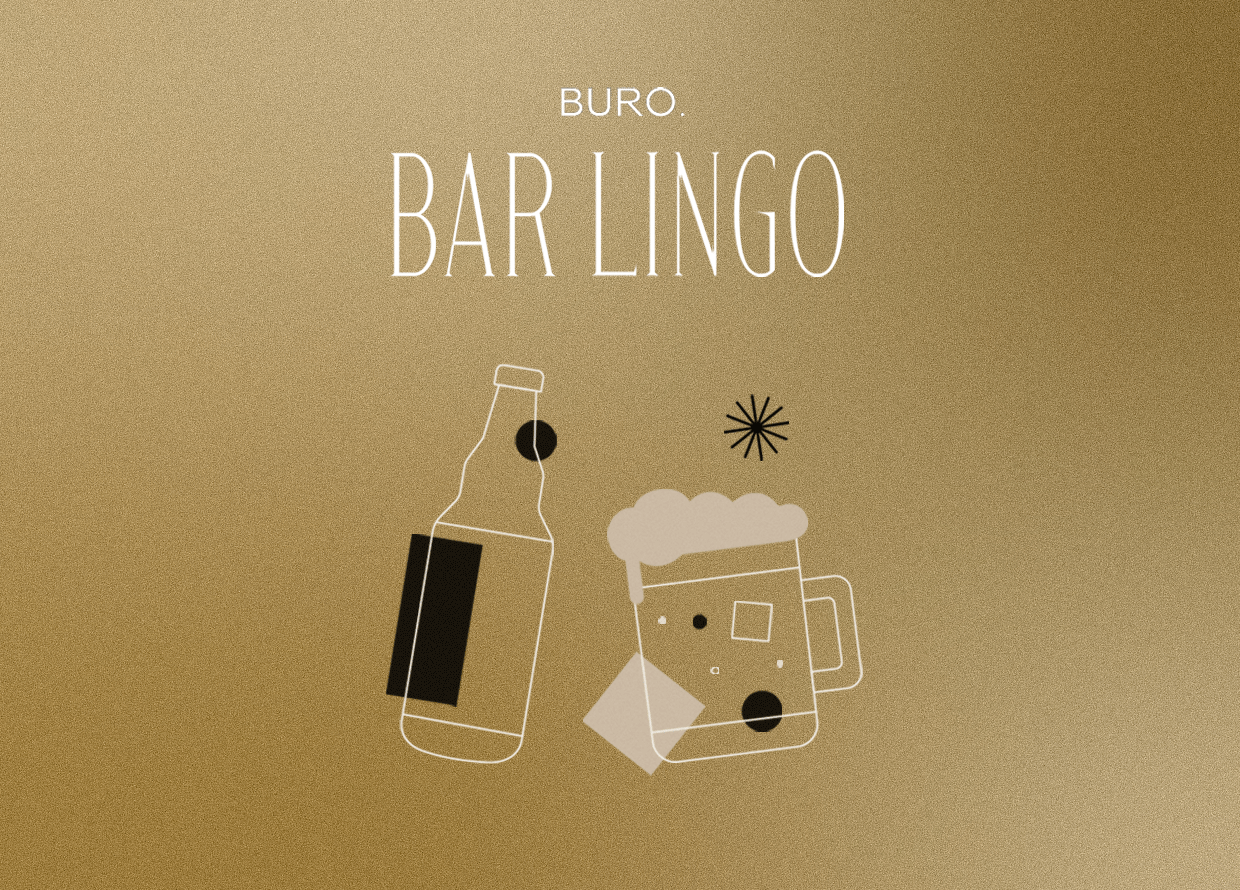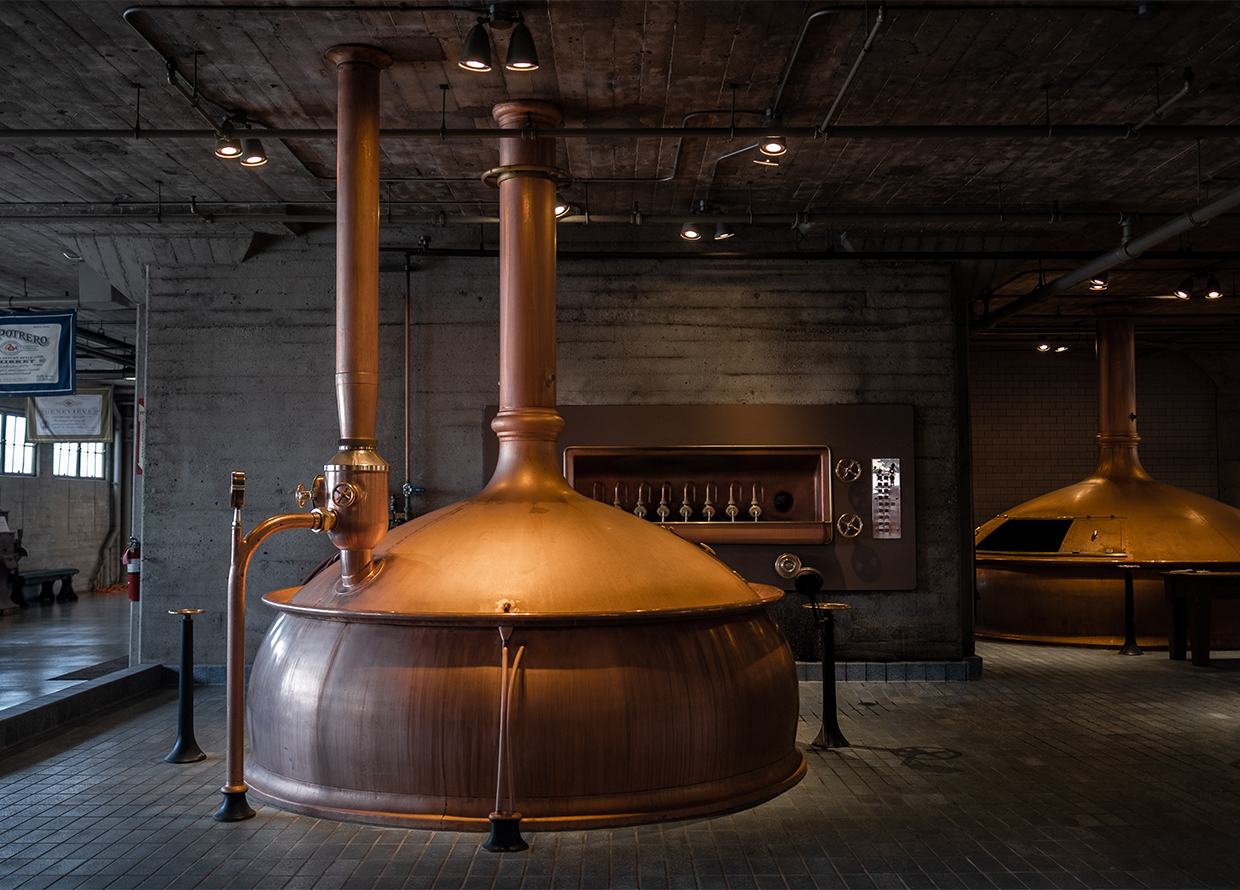BURO Bar Lingo: A guide to the history, process and types of beer
A crowd favourite

A drink that needs no introduction, beer is the most popular alcoholic beverage in the world and is consumed at almost any occasion. This beverage has been around for thousands of years, thus its extensive history is no surprise, but it still continues to evolve with time.
We’re breaking down beer in this edition of BURO Bar Lingo. From the classic types to modern interpretations, here’s everything you need to know about this beloved drink.
WHAT IS BEER?
Beer is an alcoholic beverage that’s made by brewing and fermentation from cereals like malted barley and flavoured with hops for a slightly bitter taste. This classic recipe has remained the same for thousands of years and is a crowd favourite.
WHERE DID BEER COME FROM?
Although many countries have tried to stake their claim as the originators of beer, the first production took place in the period of the Sumerians, around 4,000 BCE. Many believe that Germany was the birthplace of beer; however, that is actually where modern and popular beer styles were developed in the middle ages.

Photo: Amie Johnson/Unsplash
HOW IS BEER MADE?
There are eight main steps to making beer:
- Mashing
- Lautering
- Boiling
- Separation
- Fermenting
- Maturing
- Filtering
- Packaging
Mashing is done to activate the natural enzymes in the yeast to turn their starch into sugar, which the yeast needs later in the process. This gives the beer its initial characteristics like colour, flavour, and body. This process involves very hot water to activate the enzymes and creates the base liquid of the beer, called wort.
It’s then followed by the lautering process which ensures the yeast can do its work. The wort produced is separated from the grain by pouring hot water over it to rinse off any remaining sugar.

Photo: Claude Piche/Unsplash
The next step is boiling. The beer is boiled at a very high temperature to get rid of remaining enzymes and oxygen that will stabilise the wort until it’s ready for the hops. With the wide variety of hops, brewers are constantly trying combinations to produce new flavours. Hops add bitterness to balance out the sugar produced earlier.
Once complete, fermentation starts. This two-part process happens by cooling the brew and taking the initial reading to work out the alcoholic content, before adding the yeast. Primary fermentation is when the yeast converts the sugars into alcohol and carbon dioxide, and secondary fermentation allows the beer’s flavours to fully open up to add complexity and a better taste. This is when the maturing process begins.

Photo: Steve Wrzeszczynski/Unsplash
The next step involves taking the final gravity reading and comparing it with the first to work out the final alcoholic content. Gravity reading is a measurement of the beer’s density. An original gravity reading indicates the number of dissolved sugars in the beer that can be converted into alcohol which is then compared to the final gravity reading to indicate the beer’s potential alcohol percentage.
Lastly, the beer will be filtered and packaged with a final conditioning period of at least two weeks. Natural carbonation, a process that occurs when the yeast eats the sugar to produce carbon dioxide and alcohol, usually happens during this conditioning stage. The amount of carbonation achieved depends on the amount of sugar added, and this is what gives the beer its defining texture.
TYPES OF BEERS

Photo: Jon Parry/Unsplash
There are three main types of beers: lagers, ales, and hybrids. The difference between these two main classifications is the type of yeast used and the fermentation process. Lagers are fermented with bottom-fermenting yeast at cold temperatures (1–10 degrees Celsius), while ales are fermented with top-fermenting yeast at warm temperatures (15–21 degrees Celsius). Hybrids are beers that contain both lager and ale characteristics.
The starting point of a beer is always as an ale or a lager, then their flavours and specific styles continue to evolve from there.
LAGER
A classic and a typical entry point for beginners, lagers taste light and a little malty. It is made with bottom fermenting yeast that has a lower tolerance to alcohol.
IPA
India Pale Ales (IPAs) have a herbal, citrusy or fruity flavours that usually come from the hops used. It can be rather bitter with a high alcohol level, but the final outcome usually depends on the variety of hops used.

Photo: Elin Tabitha/Unsplash
PALE ALE
Pale Ales are similar to IPAs but usually carry a lower alcohol content than IPAs. There are six different types of pale ales and they’re all malty, medium-bodied, and easy to drink.
PILSNER
A pilsner falls under the lager category and originates from the Czech Republic. It’s a pale lager that has a crisp, refreshing taste that’s lightly hopped.
STOUT BEER
A stout is a dark, rich, and flavourful ale that’s a favourite among drinkers. While the darker colour of the beer gives the impression it’s tough to drink, these stouts carry sweetness from unfermented sugars that offset any bitterness. Depending on where they come from, the flavours of a stout beer differs. Ireland and the United Kingdom are known for sweet stouts that are low in bitterness.

Photo: Stefan Grage/Unsplash
PORTER
Originating from the United Kingdom, porters are dark in colour like stouts. This is because of the common ingredients used like chocolate or dark-roasted malts. However, porters tend to taste more like chocolate rather than coffee.
BELGIAN BEER
Belgian beers have a fruity, spicy and sweet flavour with a high alcohol content and low bitterness.
WHEAT BEER
The main ingredient is wheat, which gives the beverage a light colour and a nice alcohol level that makes it delicious when combined with a slice of lemon or orange. Wheat beers often have a funky and tangy flavour.
For more BURO Bar Lingo stories, click here.
| SHARE THE STORY | |
| Explore More |



